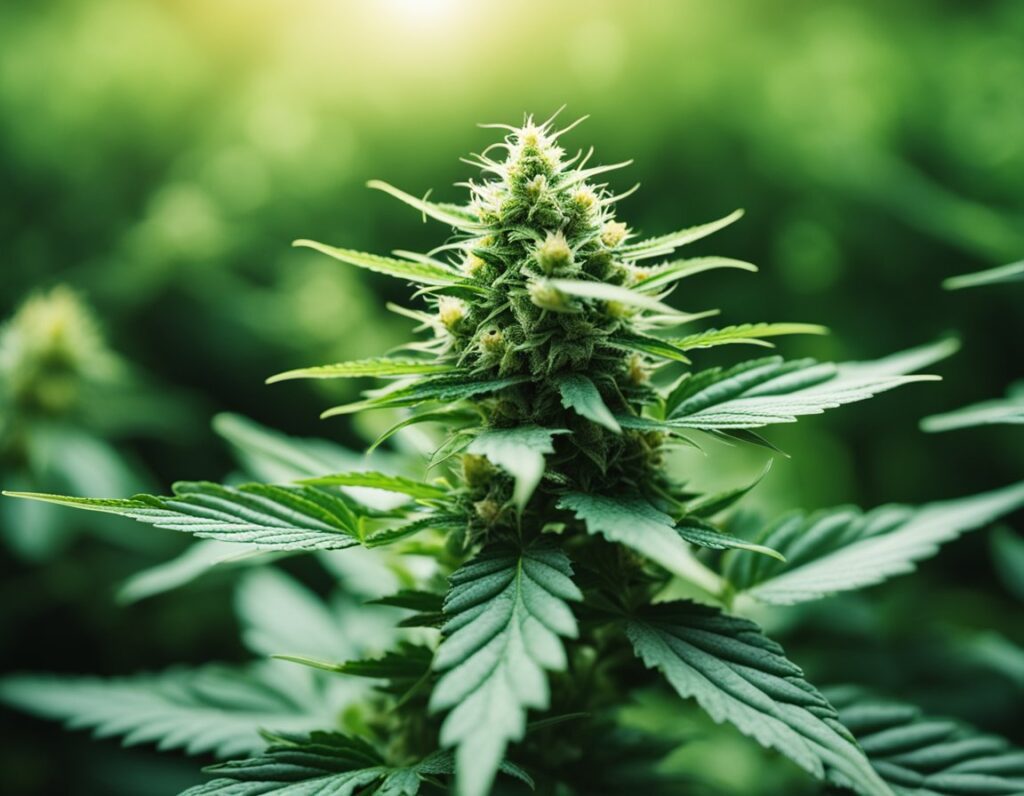
Effective pest management in cannabis cultivation relies on strategic practices to safeguard plant health and ensure sustainable yields. This involves understanding the principles of Integrated Pest Management (IPM), recognizing common cannabis pests, and assessing damage to maintain optimal plant conditions.
Integrated Pest Management (IPM) offers a structured, environmentally conscious approach to pest control. It emphasizes the use of mechanical, biological, and organic methods to manage pests sustainably. Strategies may include crop rotation, introducing natural predators, and utilizing resistant plant strains.
An essential point is actively monitoring and identifying pests to implement timely interventions. By minimizing chemical pesticide use, IPM supports ecosystem health and optimizes crop yield through sustainable practices.
Cannabis cultivation is vulnerable to a variety of pests, impacting plant vigor and yield. Common pests include spider mites, aphids, thrips, and fungus gnats. These pests can cause significant damage by feeding on plant tissues and spreading diseases.
Understanding pest life cycles and behaviors is crucial for effective control. For instance, spider mites thrive in dry conditions, making humidity control an important deterrent. Early detection and targeted solutions are essential to minimize these threats.
Regular assessment of pest damage is fundamental to maintaining cannabis plant health. Visual inspections and the use of sticky traps aid in identifying and gauging pest populations. It’s important to examine leaves, stems, and flowers for signs of damage like discoloration, wilting, or abnormal growth.
Evaluating plant health involves considering environmental conditions like humidity, lighting, and nutrient availability. Monitoring these factors helps prevent stress, which can make plants vulnerable to infestation. Maintaining a balanced growing environment is key to preventing extensive damage and facilitating recovery from pest issues.
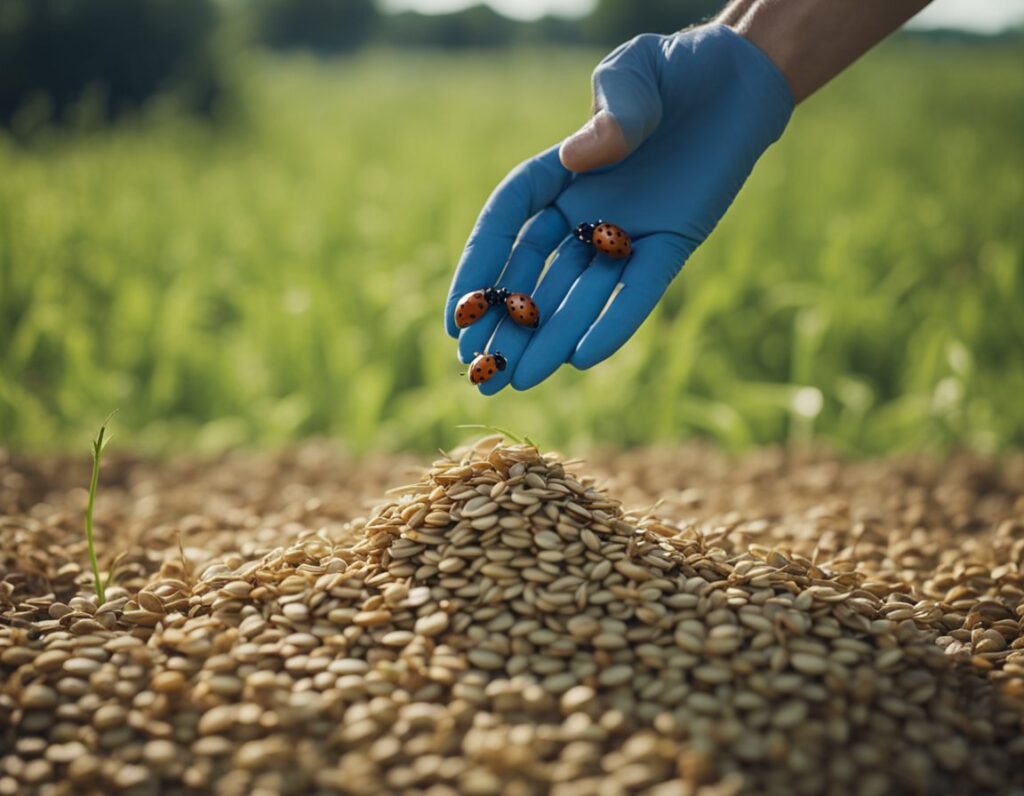
Effective pest management for cookie seeds in the US incorporates biological and mechanical strategies. You can leverage naturally occurring beneficial insects and use physical barriers and devices to manage pest populations efficiently and sustainably.
Beneficial insects play a crucial role in biological control by naturally reducing pest populations. Predators such as the green lacewing and parasitoids target specific pests without harming your crops. Green lacewings, for example, feed on aphids, a common threat to cookie seed plants. By introducing and conserving these insects in your garden, you make use of a natural resource that decreases the need for chemical pesticides.
Focus on maintaining a habitat that supports these beneficial insects. Planting flowering plants around your crops can attract and sustain them. It’s effective to use a diverse planting strategy to provide cover and food for these insect allies. Monitoring pest and predator populations helps maintain a balanced ecosystem, ensuring that pest control is both eco-friendly and sustainable.
Mechanical control tactics provide a practical approach to pest management, using physical means to reduce pest access and infestation. Barriers such as row covers and netting can be placed over cookie seeds to prevent pests from reaching them. These barriers are effective against flying insects while still allowing light and rain to nourish the plants. Traps can also be employed strategically in the field to capture and monitor problematic pests.
Other methods include handpicking pests from plants and using water jets to dislodge them. Regularly inspecting your plants can help identify early signs of infestation, making these methods most effective when integrated into routine care. Combining these practices with biological control strategies can result in a comprehensive and adaptable pest management plan for your cookie seeds.
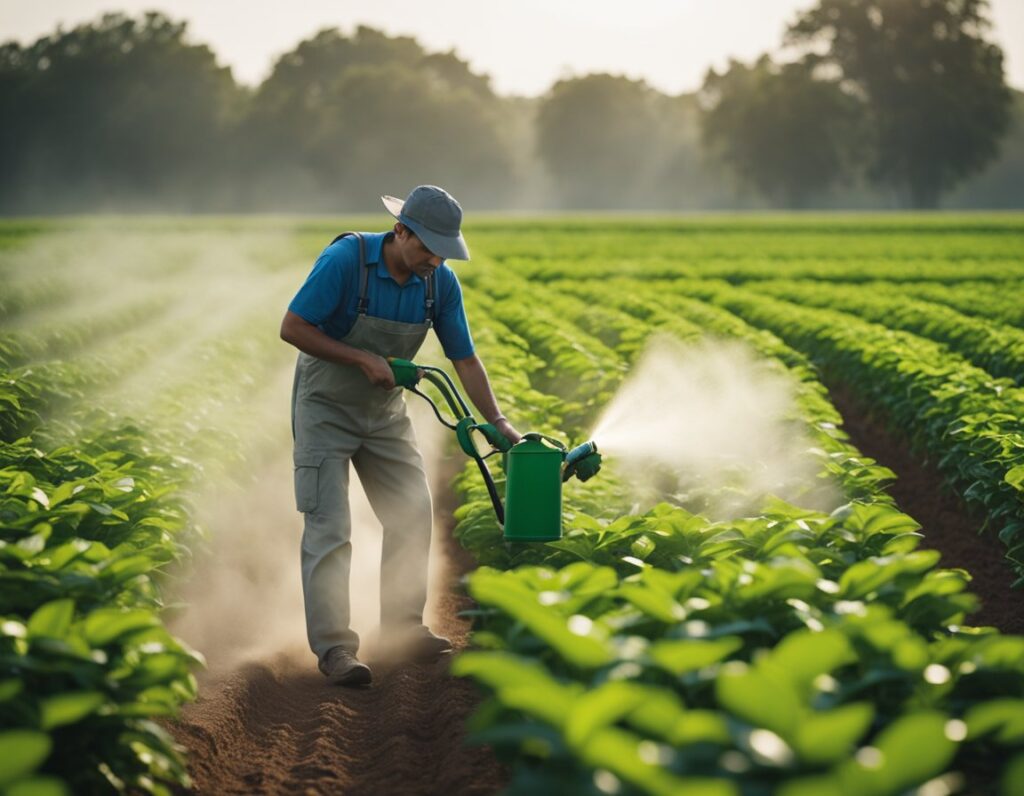
The use of chemical pesticides is prevalent in agriculture to manage pest populations effectively. While they play a crucial role in protecting crops like cookie seeds, the overuse of these chemicals can lead to pest resistance. Understanding the safe application of pesticides and strategies for managing resistance is vital.
When using chemical pesticides, it’s essential to follow guidelines to ensure safety and effectiveness. First, choose the right insecticide based on the type of pest you are dealing with. It’s crucial to read and understand the label instructions, which detail the appropriate dosage, application methods, and safety precautions.
Practice proper timing and target application areas to minimize the amount of chemical used while maximizing impact. Always wear protective gear such as gloves, masks, and goggles to reduce exposure risks. Also, ensure equipment is well-maintained and calibrated for accurate delivery. Avoid using pesticides near sensitive areas like water sources and adhere to any regional regulations that may be in place to protect the environment and public health.
Pest resistance to synthetic control measures is a growing concern that can make traditional methods less effective. To manage this, adopt integrated pest management (IPM) strategies that combine chemical and non-chemical approaches. Rotate different types of pesticides to prevent pests from developing immunity to a single mode of action.
It’s also important to monitor pest populations regularly to detect any shifts in susceptibility. Implementing biological control measures, like introducing natural predators, can also assist in reducing resistance. Finally, maintain records of pesticide use and resistance patterns to better inform future management decisions, ensuring long-term effectiveness.
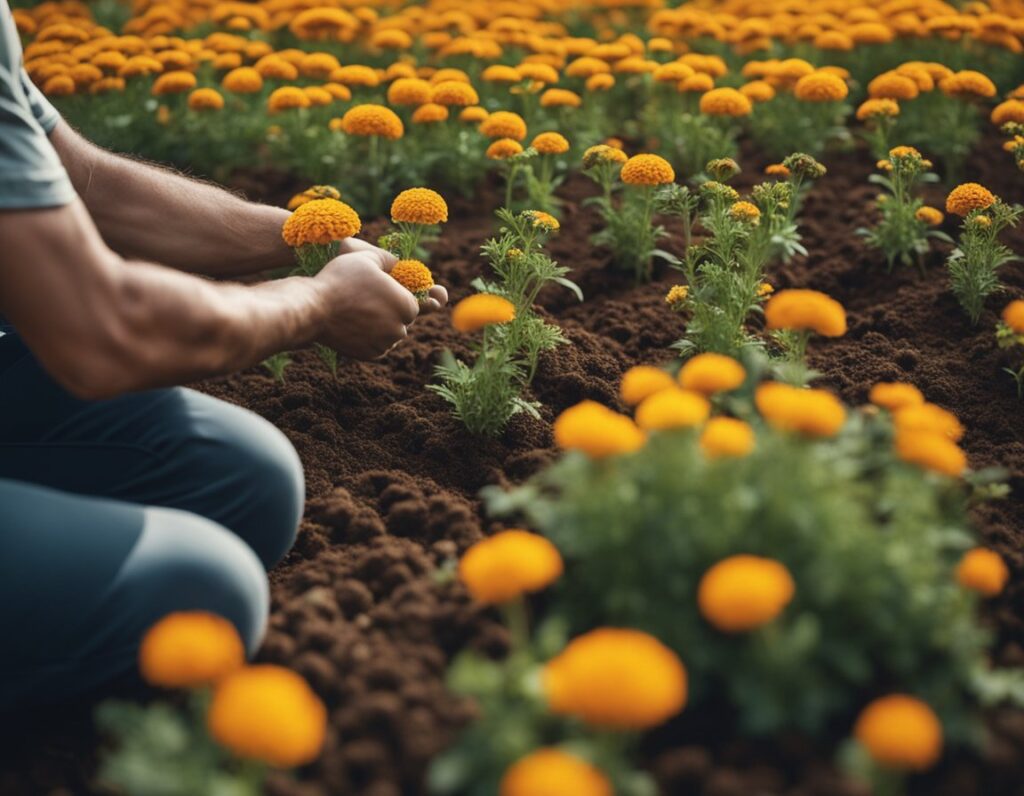
In sustainable pest management, using cultural practices can help you manage pests while reducing chemical reliance. These practices include crop rotation, maintaining soil health, specific seed treatments, and controlled indoor environments to optimize growth conditions.
Crop rotation is an effective cultural practice that involves alternating the types of crops grown in a particular area. This method helps break the life cycles of specific pests by removing their preferred hosts and minimizing soil nutrient depletion. You can implement intercropping, growing multiple crops together, to deter pest infestations naturally. By strategically placing plants, you hinder pests’ ability to move and find food sources, which disrupts their lifecycle. This practice can increase biodiversity and contribute to a more resilient agricultural system.
Maintaining healthy soil is crucial to sustainable pest management. Rich, well-aerated soil with a balanced pH aids in plant growth and resilience against pests. You should manage soil fertility by incorporating organic matter, rotating legumes as cover crops, and using compost. These strategies promote beneficial microorganisms that deter harmful pests. Additionally, applying appropriate seed treatments can protect the seedlings from early-stage pests. Biological seed treatments, such as microbial coatings, are eco-friendly options that strengthen plants’ natural defenses without relying on extensive chemical use.
Indoor growing provides a controlled environment that can limit pest exposure. By regulating factors like temperature, humidity, and light, you restrict pest access and reproduction rates. You should practice strict hygiene and sanitation to prevent pest introductions. In addition, efficient nutrient management ensures that plants receive balanced nutrients, boosting their natural defense mechanisms. Hydroponic and aeroponic systems offer precise nutrient delivery and reduce the chance of soil-borne pest invasions, further enhancing your pest management efforts.
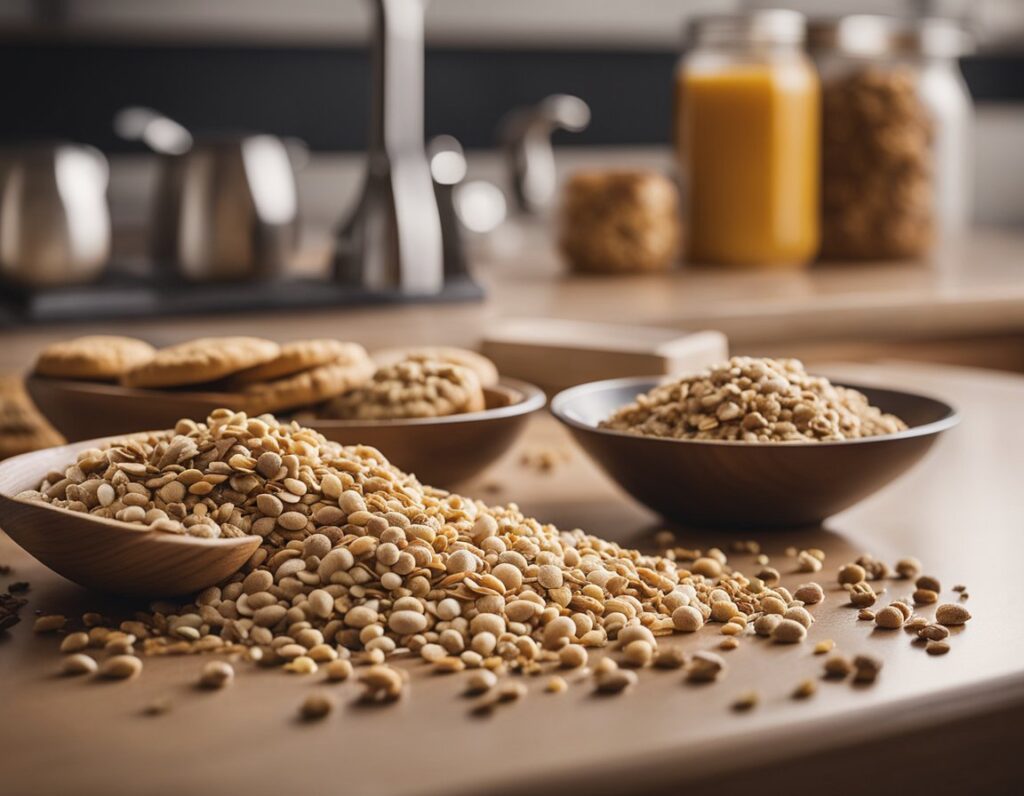
Effective pest control for cookie seeds involves targeted strategies to manage common pests like spider mites, aphids, whiteflies, fungus gnats, thrips, and caterpillars. Understanding the specific techniques for addressing each pest ensures healthy seed development and reduces the likelihood of infestations.
To control spider mites, introduce natural predators like ladybugs or predatory mites. Regularly inspect plants for webbing and stippling, then exfoliate infested areas with water to wash away mites. For aphids, consider using insecticidal soap or neem oil. Companion planting with garlic or chives can deter aphids. Incorporate sticky traps around your plants to monitor and manage populations more effectively.
Yellow sticky traps are effective for monitoring and capturing adult whiteflies. Employ biological controls, such as the introduction of Encarsia formosa parasitoids. To address fungus gnats, allow soil to dry out between waterings. Use a layer of sand on the soil surface to prevent young larvae from maturing. Consider applying BTI (Bacillus thuringiensis israelensis) treatments, which target larvae without harming plants.
Manage thrips by planting marigolds or onions nearby, which can serve as deterrents. Apply reflective mulches to repel thrips by confusing their visual orientation. For caterpillar control, handpick visible caterpillars during the day. Use a biological pesticide like Bacillus thuringiensis (Bt), specifically targeting caterpillar larvae. Row covers can prevent adult moths from laying eggs on plants.
When managing pests and diseases in cookie seeds organically, it’s crucial to utilize natural solutions and strategically manage resistance. The goal is to integrate approaches that stimulate natural defense mechanisms and avoid reliance on synthetic chemicals.
Effectively controlling pests in an organic manner involves utilizing a variety of natural methods and substances. Neem oil is a popular option, derived from the seeds of the neem tree, and serves as an effective insect repellent. Another useful substance is diatomaceous earth, composed of fossilized aquatic organisms, which can dehydrate and kill soft-bodied insects upon contact. Bacillus thuringiensis, a naturally occurring bacterium, targets specific larvae, preventing them from causing damage. Companion planting is another strategy, where planting certain plants in proximity can naturally deter pests. For example, growing plants that attract beneficial insects can help you manage pest populations in a balanced way. Utilizing these methods ensures you can maintain pest control without depending on synthetic chemicals.
In organic agriculture, managing resistance involves using a diverse array of techniques to prevent pests and diseases from developing resistance to treatments. Enhancing organic matter in your soil improves plant health, thus enabling them to ward off pests naturally. This also ensures a favorable environment for the beneficial organisms involved in biocontrol. Crop rotation and diversified planting systems help disrupt pest life cycles and reduce the likelihood of resistance. By combining these methods, you build a resilient system that relies on diversity to control and manage pests effectively, ensuring that pest management remains sustainable and effective in the long term without fostering resistance issues.
When managing pests in cookie seed cultivation, it’s crucial to use effective and sustainable practices. These can include non-chemical methods, employing beneficial insects like ladybugs, and applying cultural controls for minimizing pest impact.
You can utilize companion planting and physical barriers to manage pests. Companion plants, such as marigolds, naturally repel harmful insects. Floating row covers can protect seedlings from pests without using chemicals.
Release ladybugs onto your crops to naturally control aphid populations. They feed on aphids and other small insects, reducing pest numbers efficiently. Make sure to release them in early morning or late afternoon to enhance their effectiveness.
Regular monitoring and inspection of your plants are key. Look for early signs of pest activity, like wilting or holes in leaves. Implement handpicking or use organic insecticidal soap to tackle minor infestations promptly.
Harvest these varieties when trichomes are cloudy to amber. This timing minimizes exposure to pests. Consider indoor drying in a controlled environment to further reduce the risk of pest issues post-harvest.
Rotate crops and manage planting dates strategically to disrupt pest cycles. Encouraging biodiversity by incorporating a variety of species can also deter pests naturally. Maintain proper soil health to bolster plant resilience.
We ship and deliver world wide via USPS and various couriers.
We offer a wide range of secure and anonymous online payment options.
We care about you, our customer. Please contact us with any questions or concerns.
Find out more about the benefits of being a loyal and regular customer.
WE ARE EVERY GROWERS ONE STOP SHOP TO ACQUIRE PREMIUM CANNABIS SEEDS FOR SALE IN THE USA, CANADA AND AUSTRALIA

Farmers Lab Seeds 2024, | All Right Reserved
Seeds are sold as novelty items, souvenirs, and collectibles. They contain 0% THC. We encourage our customers to check the legislation in their Country, State, Province, and Municipality prior to purchasing items from our store. We do not provide growing information.
All seeds are sold as hemp, and lab tested under 0.3% THC. This product is not for use by or sale to persons under the age of 21. This product should be used only as directed on the label. It should not be used if you are pregnant or nursing. Consult with a physician before use if you have a serious medical condition or use prescription medications. A Doctor’s advice should be sought before using this and any supplemental dietary product. All trademarks and copyrights are property of their respective owners and are not affiliated with nor do they endorse this product.
These statements have not been evaluated by the FDA. This product is not intended to diagnose, treat, cure or prevent any disease. Individual weight loss results will vary. By using this site, you agree to follow the Privacy Policy and all Terms & Conditions printed on this site. Void Where Prohibited by Law.